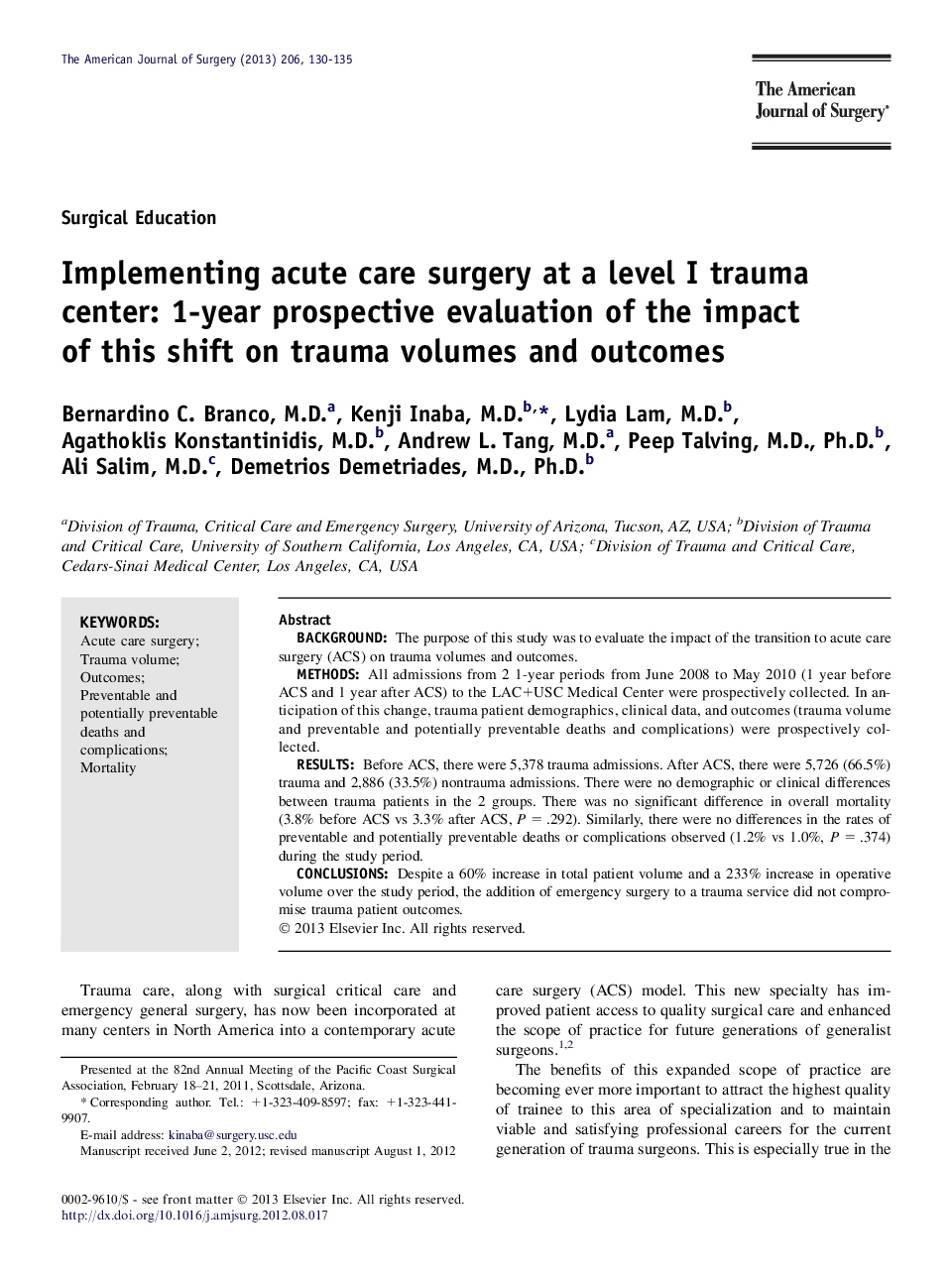| Article ID | Journal | Published Year | Pages | File Type |
|---|---|---|---|---|
| 4279335 | The American Journal of Surgery | 2013 | 6 Pages |
BackgroundThe purpose of this study was to evaluate the impact of the transition to acute care surgery (ACS) on trauma volumes and outcomes.MethodsAll admissions from 2 1-year periods from June 2008 to May 2010 (1 year before ACS and 1 year after ACS) to the LAC+USC Medical Center were prospectively collected. In anticipation of this change, trauma patient demographics, clinical data, and outcomes (trauma volume and preventable and potentially preventable deaths and complications) were prospectively collected.ResultsBefore ACS, there were 5,378 trauma admissions. After ACS, there were 5,726 (66.5%) trauma and 2,886 (33.5%) nontrauma admissions. There were no demographic or clinical differences between trauma patients in the 2 groups. There was no significant difference in overall mortality (3.8% before ACS vs 3.3% after ACS, P = .292). Similarly, there were no differences in the rates of preventable and potentially preventable deaths or complications observed (1.2% vs 1.0%, P = .374) during the study period.ConclusionsDespite a 60% increase in total patient volume and a 233% increase in operative volume over the study period, the addition of emergency surgery to a trauma service did not compromise trauma patient outcomes.
